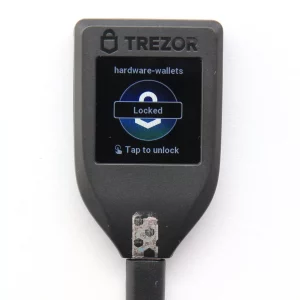Two of the most significant upgrades in Bitcoin’s history are SegWit(Segregated Witness) and Taproot. They are two key protocol upgrades that have significantly improved Bitcoin’s functionality. Let’s break down their individual strengths, the implications for Bitcoin users and miners, and see how they work together.
What is SegWit and Native SegWit?
SegWit (Segregated Witness) is an upgrade to the Bitcoin protocol introduced in 2017. It is an improvement to Bitcoin that separates transaction data from the signatures (called witness data) used in a Bitcoin address. This allows for smaller transactions, enabling more transactions to fit within each block on the Bitcoin network.
The primary goal of SegWit was to increase the block size limit by moving some data (witness data) outside the blockchain. This allowed for more transactions to be processed within each block, thereby increasing the network’s transaction throughput and reducing Bitcoin transaction fees.
Native SegWit, on the other hand, refers to the implementation of SegWit in Bitcoin’s core protocol to allow for a more seamless and native integration of SegWit-enabled wallets and nodes. Native SegWit is considered a more efficient and reliable version of SegWit because it eliminates the need for additional layers or wrappers to process SegWit transactions.
Is SegWit Good for Bitcoin?
SegWit is generally considered a positive development for Bitcoin, as it addresses some of the network’s scalability issues. By increasing the block size limit and improving transaction processing efficiency, SegWit helps to reduce transaction fees and increase the overall throughput of the network. This is crucial for maintaining Bitcoin’s usability and accessibility for users and merchants. It also paved the way for further advancements like the Lightning Network, a second-layer solution for faster and cheaper micropayments.
What is Taproot?
Taproot is a proposed upgrade to the Bitcoin protocol that aims to enhance the network’s functionality and flexibility. Activated in 2021, Taproot focuses on improving smart contract capabilities, allowing for more complex and versatile transactions. Taproot enables the creation of multi-input transactions, which can be used to build more advanced smart contracts and improve the overall functionality of the network.
Taproot builds upon SegWit’s foundation. It introduces a new scripting system called Merkle trees that allows for more complex transactions while keeping them compact. This enhances privacy by making it difficult to distinguish between simple and complex transactions on the blockchain.
Is Taproot good for Bitcoin?
Taproot is a significant improvement for Bitcoin after SegWit, as it opens up new possibilities for smart contract development and decentralized applications (dApps). By enabling more complex and versatile transactions, Taproot has the potential to attract new developers and users to the Bitcoin ecosystem. Additionally, Taproot’s improved smart contract capabilities can enhance the network’s security and privacy features.
Taproot is a major leap forward for Bitcoin. It improves scalability by enabling more complex transactions within the same block size. Additionally, Taproot enhances privacy by obscuring transaction details and fostering the development of more advanced smart contracts.
Dig deeper: All You Need to Know About Taproot
Bitcoin Taproot vs SegWit
While both SegWit and Taproot are upgrades to the Bitcoin protocol, they serve different purposes. SegWit primarily addresses the scalability issue by increasing transaction throughput and reducing fees, whereas Taproot focuses on enhancing the network’s functionality and smart contract capabilities. In many ways, SegWit can be seen as a necessary precursor to Taproot, as it paved the way for the more advanced upgrade.
Segregated Witness (SegWit) transactions are generally smaller and cheaper due to the separation of transaction signatures from the transaction data, whereas Taproot transactions are known for their advanced functionalities, such as multi-path payments, Schnorr signatures, and reusable script abilities. These advanced features enable Taproot to facilitate more complex and secure transactions, like smart contracts, privacy-enhancing tools, and improved scripting capabilities.
Bitcoin Taproot vs. Native SegWit: Taproot builds on Native SegWit (bech32) by enhancing privacy, efficiency, and flexibility in transactions, especially for multi-signature setups. While Native SegWit improves transaction speed and lowers fees, Taproot offers additional privacy by making complex transactions indistinguishable from simple ones.
Taproot vs SegWit fees
SegWit reduces transaction fees by increasing the block size limit and improving transaction processing efficiency. This results in lower fees for users and increased throughput for the network. Taproot, while not specifically designed to address fee-related issues, is expected to have a positive impact on fees by enabling more efficient and complex transactions.
Can You Send Bitcoin from SegWit to Taproot?
Yes, it is possible to send Bitcoin from a SegWit-enabled address to a Taproot-enabled address. The process involves creating a new transaction that spends the SegWit output and sends the funds to the Taproot address. This is a straightforward process for users and does not require any special actions.
The transition from SegWit to Taproot is seamless, and you can continue to use your existing wallets and software to interact with the network. However, it’s essential to note that not all wallets and nodes may support Taproot, and you may need to upgrade your software or switch to compatible wallets to fully utilize the benefits of Taproot.
How to convert SegWit to Taproot
Converting SegWit to Taproot is a relatively straightforward process. You can simply create a new Taproot-enabled address and transfer your funds from your SegWit address to the new Taproot address. This process is similar to transferring funds between different wallets or addresses on the Bitcoin network.
Converting SegWit to Taproot is a process that involves creating a new address that spends the SegWit output and sends the funds to a Taproot address. This can be done by using a Bitcoin wallet that supports both SegWit and Taproot, such as BlueWallet.
Taproot Wallets
Many wallets now support Taproot addresses, which are easily identified by their unique prefix: “bc1p”. Unlike older Bitcoin addresses, Taproot addresses start with “bc1p” instead of “bc1q” (Legacy Bitcoin address). Here’s an example of a Taproot address: bc1p8denc9m4sqe9hluasrvxkkdqgkydrk5ctxre5nkk4qwdvefn0sdsc6eqxe.
Wallets supporting Taproot addresses include the following:
- Exodus
- Phoenix
- Muun
- Aqua Wallet
- Wallet of Satoshi
- Wasabi
- Specter
- Bitcoin Core
- Alby
- Guarda Wallet
- Blockstream Jade
- Bitbox
- Coldcard
- OneKey
- Trezor
- Passport Wallet
SegWit Wallets
Segwit wallets can generate two main types of addresses: P2SH Segwit address, starting with the number “3”: 3J98t1WpEZ73CNmQviecrnyiWrnqRhWNLy and Bech32 address, starting with “bc1”: bc1qar0srrr7xfkvy5l643lydnw9re59gtzzwf5mdq. To use these addresses, you need SegWit compatible wallets such as the following:
SegWit vs Taproot: Which One to Use?
Both SegWit and Taproot are valuable upgrades to the Bitcoin network, each offering unique benefits. SegWit is a more immediate solution to the network’s scalability issues, while Taproot focuses on improving the network’s flexibility and versatility. You can take advantage of both upgrades by using wallets that support both SegWit and Taproot.
If you prioritize lower fees and better efficiency for simple transactions, SegWit (especially Native SegWit) is a solid choice. However, if you require enhanced privacy, more efficient complex transactions, and are looking to leverage advanced features like smart contracts, Taproot is the better option. Both upgrades coexist and complement each other, contributing to the overall robustness and scalability of the Bitcoin network.



























